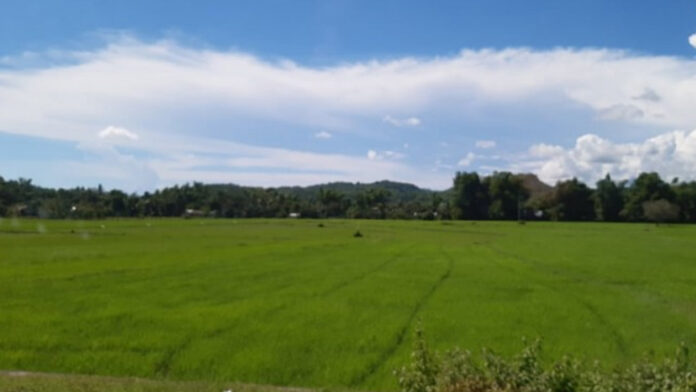Various state funding and insurance agencies as well as the National Food Authority (NFA) gave full support for the success of the Masagana Rice Industry Development Program (MRIDP), the Department of Agriculture (DA) said on Monday.
At the convergence meeting last week held at Munoz, Nueva Ecija, the Land Bank of the Philippines (LandBank), Development Bank of the Philippines (DBP), and Philippine Crop Insurance Corp. (PCIC) vowed to expand their portfolios to farm clusters to be organized under the MRIDP.
The NFA, on the other hand, said it would buy farmers’ wet palay produce in bulk at slightly higher prices than prevailing farmgate.
To help the farm clusters be formed under the MIRDP, the DA would supply the farm cluster master list to LandBank, DBP and the NFA and government assistance would be provided to the clustered farmers.
“With clustering, government agencies can deal with the leaders of these groups instead of individual farmers so that they can expedite lending in time for the planting season,” the DA said in a news release.
“It is through the clusters that all involved government agencies would be pouring all its production (seeds– both hybrid and inbred and a cocktail of fertilizer options), mechanization, and marketing assistance,” it added.
This collaboration, the DA said, is part of the convergence efforts of the Marcos administration to help the country achieve self-sufficiency and its goal of making available nutritious but affordable rice to its people.
The DA held its two-day convergence workshop in Munoz, Nueva Ecija to ensure that the MRIDP takes off as targeted during the dry season crop to be planted from September or October this year.
Regional executive directors of DA attended the convergence with their rice focal persons, LandBank, Agricultural Training Institute, the Philippine Rice Research Institute, Philippine Center for Post Harvest and Mechanization, Development Bank of the Philippines, National Irrigation Administration, the National Food Authority, the Rice Board, Cooperatives Development Authority, the Department of Interior and Local Government, Philippine Crop Insurance Corp., Agricultural Credit and Policy Council, Bureau of Plant Industry and the National Rice Program officials.
LandBank Vice President Glecy Angeles said the bank is currently rationalizing its lending program focused on the agriculture sector.
At the same time, PCIC is exploring reinsurance to cover more rice farmers and their crops ravaged by natural calamities, pests and diseases.
The Agricultural Training Institute will focus its training programs in its learning centers on farm clusters (the first strategy of the Masagana Rice Industry Development Program), instead of individual or what he termed as “to whom it may concern basis.”
The Land Bank said its Sikat Saka program, which began with PHP1.6 billion from internal funds lent to small palay and corn farmers, is now at PHP3 billion based on the needs of farmers.
Angeles said lending rose from PHP50,000 to PHP78,000 per hectare.
The LandBank said it had lent PHP780 billion to the agricultural sector and is looking into expanding support to farm clusters participating in the MRIDP. (PNA)




